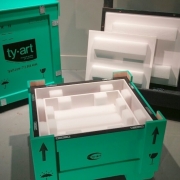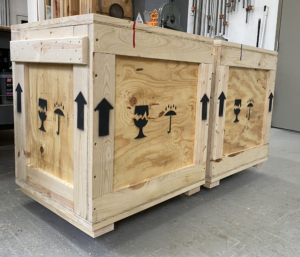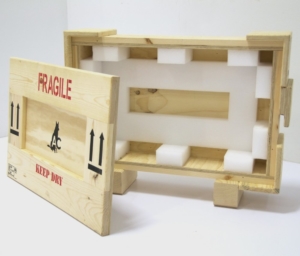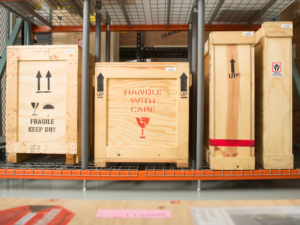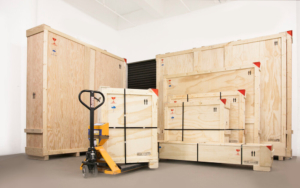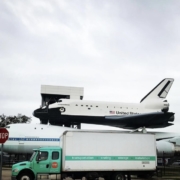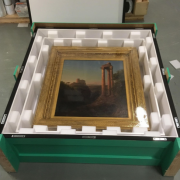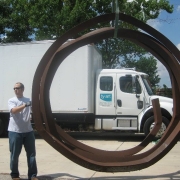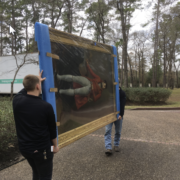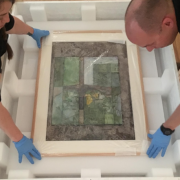Museums in Houston
If you are looking for a museums to visit in the Houston area, look no further than this compiled list of the top places to visit.
Specific days and times for free museum admission
Children’s Museum of Houston
Free Family Night is every Thursday from 5pm-8pm. Advanced online ticket reservations are required to enter. No walk-up visits will be admitted. Reservations open every Monday at 9 am for the upcoming Free Family Night.
Rest assured that your tykes will sleep soundly after an evening at the Children’s Museum. Let them run, jump, and explore through all of the exhibits during Free Family Night. Garage parking on Free Family Night is $3
Buffalo Soldiers National Museum
Free admission 1pm-5pm Thursdays; Children under 5 are always free.
This museum is dedicated to African-American soldiers and features workshops as well as reenactments.
The Health Museum
Free general admission 2pm-7pm Thursdays; DeBakey Cell Lab open until 7pm every Thursday, $3 per person for members and $5 per person for non-members at the cell lab
With heavy hitters like the Children’s Museum and Museum of Natural Science next door, this gem of a museum can often be overlooked. But it is well worth a Thursday afternoon trip with your budding scientist or hands-on tinkerer to explore the inner workings of the human body, perform real lab experiments, and learn about health and disease. The museum and cell lab are geared toward attendees at least seven years old.
Holocaust Museum Houston
Free admission 2pm-5pm Thursdays and on certain holidays; Kids ages 18 and under are always free.
Dedicated to educating the public about the repercussions of prejudice and hatred, this museum is one that is sure to impact you for a lifetime. While the content may not be as light as other museums in the area, it’s definitely one worth visiting to understand the impact of the Holocaust on the past, present, and future.
Houston Museum of Natural Science
Free admission to the permanent exhibit halls 3pm-6pm Thursdays (last entry is at 4:15pm)
Discover the dinosaurs and more and save significantly on tickets. With 15 permanent exhibitions, this might be the best deal in the city.
The Menil Collection
The Menil Collection is free to visit, however timed entry ticket reservations are required prior to visiting. In addition to the current exhibitions, visit the Menil for concerts and poetry readings, or just relax on the campus’s green spaces.
Houston Arboretum and Nature Center
This gem offers hiking trails and activities for kids of all ages, including a playground. It’s a great spot to visit on any day, as long as it isn’t raining! Make sure to check the calendar before you go.
Lawndale Art Center
Not just a destination for gram-worthy photos, the Lawndale Art Center plays hosts to contemporary art from emerging and local artists.
Contemporary Art Museum Houston
For an interactive experience, pick up an art guide from the front desk for kid-friendly activities to do throughout the museum. Guests are also invited to celebrate creativity by visiting the current exhibitions on Family Days when food trucks abound and team members are available to chat about the artwork.
Houston Center for Contemporary Craft
Head over to the center’s Hands-On Houston event, a free, craft-making activity led by local guilds and artists on the first Saturday of every month. Families and kids of all ages can learn a craft technique, material, or form that is related to the current exhibits.
Houston Police Department Museum
For kids interested in police work, the Houston Police Department Museum located in the HPD headquarters lobby offers historic exhibits and displays to explore.
Art Car Museum
The Art Car Museum is open Wednesday through Sunday, February through December.
Your kids will marvel at the fantastic works of art found within the gates of the Art Car Museum. Kids and family-centric events are held often, so be sure to check out their event calendar before you go.
The Jung Center
The gallery at the Jung Center is always free. Masks are required when inside the building.
Although patrons of the Jung Center tend to be older, children are always welcome and the bookstore has a curated collection of unique children’s picture books.
Houston Museum of African American Culture
The exhibits, programs, and demonstrations are focused on educating and preserving African-American culture. HMAAC is open Fridays and Saturdays only.
Houston Center for Photography
The Houston Center for Photography galleries are open Wednesday through Sunday. Free group tours are available both in person and virtually for groups of 5 or more on Wednesdays – Fridays from 11am – 5pm, pending staff availability. Family days take place several times throughout the year and offer story and snack time as well as opportunities to interact and engage with the exhibits through craft-making.




